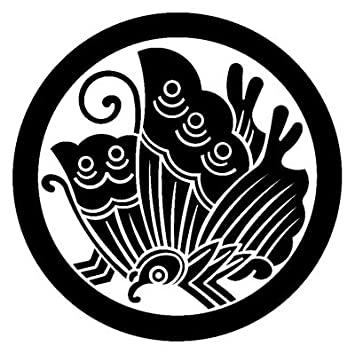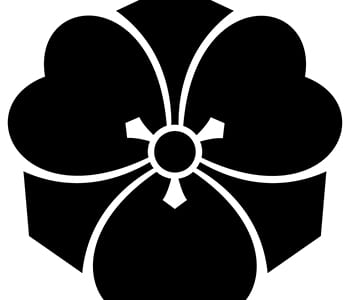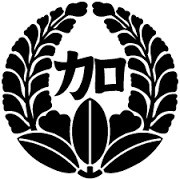
The murder occurred in 1906. It is treated as one of the unsolved cases because the statute of limitations has passed. Renowned novelist Seicho Matsumoto wrote a story about it and added a “Kamon” as an essential prop. This shows how significant a Kamon is in traditional Japanese society.
Introduction of the Kamon written by Seicho Matsumoto
On a winter night with powdery snow, Ichinosuke and his wife Minako, members of a branch of the Ikuta family, an old Hokuriku family, were brutally murdered by someone. The murderer visited the couple’s home, called Ichinosuke, pretending to be an emissary from the main family, and skillfully took Minako out as well. The next morning, their bodies were discovered on a shortcut from the village to the town, dismembered. The murderer was witnessed by Ofusa, a housewife living next door, and Yukiyo, the five-year-old daughter of Ichinosuke. Ofusa describes the murderer as a man wearing a hooded cloak and holding a lantern with the Ikuta Kamon. Prefectural police detective Matsuno and his team investigate, but they cannot find the culprit, and the case goes cold…
Kamon played a significant role here as people recognized it as an irreplaceable traditional family symbol.
Japanese Family Crest: List of the Lineage Symbols
Detailed Story Line

On a winter night with powdery snow, Ichinosuke and his wife Minako, a branch of the Ikuta family, an old Hokuriku family, were savagely murdered by somebody. The murderer visited their home, called Ichinosuke, pretending to be a messenger from the main family, and then smoothly took Minako out, too. He carried a lantern with the Kamon of the main family. The next morning, their bodies were found on a shortcut from the village to the town, mutilated.
Ofusa, a housewife living next door, and Yukiyo, the five-year-old daughter of Ichinosuke witnessed the murderer. At first, the murderer instructed Minako to bring Yukiyo along with her, but she was spared because she had a fever and was left in Ofusa’s care.
Ofusa testified that the murderer was a tall man with a lantern bearing the Ikuta Kamon and a hooded cape. Prefectural police detective Matsuno and his team launch an investigation. Still, they fail to find any physical evidence such as a murder weapon or a lantern, or a man matching the testimony.
Furthermore, in a rural area with strong ties between the main and branch families, the local people’s attitude toward cooperating in protecting themselves was a strong obstacle to the investigation.
The case went cold, and the orphaned Yukiyo was taken in by Masae Tomishima, the mother of Hatsue, who had married into the same branch family, after a family meeting.
Eighteen years later, Yukiyo was living a happy life in Masae’s family home in Hakata without knowing the truth about her parents’ death. However, before her wedding, the man in the cloak, whom she still remembers, begins to appear in her dreams.
Yukiyo asks Masae for the truth to erase her fears and learns for the first time the fact that her parents were murdered. She then visits Matsuno, now a detective in Kanazawa, and he tells her that the crime was premeditated and that the motive was a grudge.
Yukiyo also recalls her memories of that time but finds no motive for the crime. Matsuno tells her that the statute of limitations has passed and tells her to forget about the case. Yukiyo nodded in agreement, but one thing remained in her mind, like a lump in her throat.
It was the image of Masanori, the chief priest of Tokurenji Temple, walking alone. Five years ago, when she returned to the village for her family’s funeral, she had read sutras at her parents’ memorial service. This scene, which Yukiyo remembers seeing somewhere in the distant past, would lead her to solve the case…
Meanwhile, Matsuno finds a piece of a Buddhist statue wrapped in a hand towel among the stolen goods of a suspect arrested for vandalizing a temple in Kanazawa. The tenugui (hand towel) had the unmistakable Ikuta Kamon, and “Minako” was also written on it.
Matsuno confirms that the tenugui had been hidden in the base of the statue and that the handwriting of the signature is that of the murdered Minako. He was reaching out to Yukiyo in Hakata. However, Yukiyo is already on her way back to the village of her birth to uncover the identity of the cloaked man and the mystery of the lantern with the Kamon…







Add comment